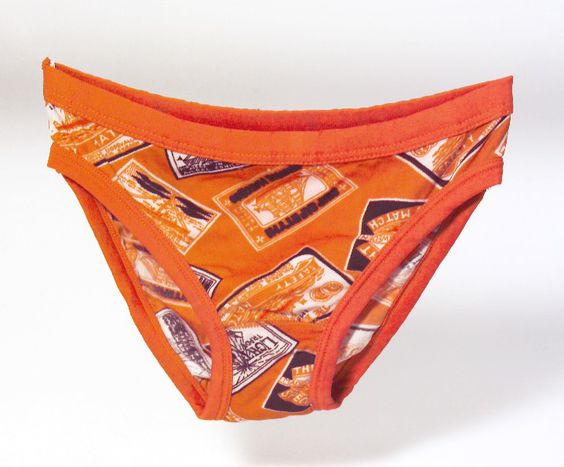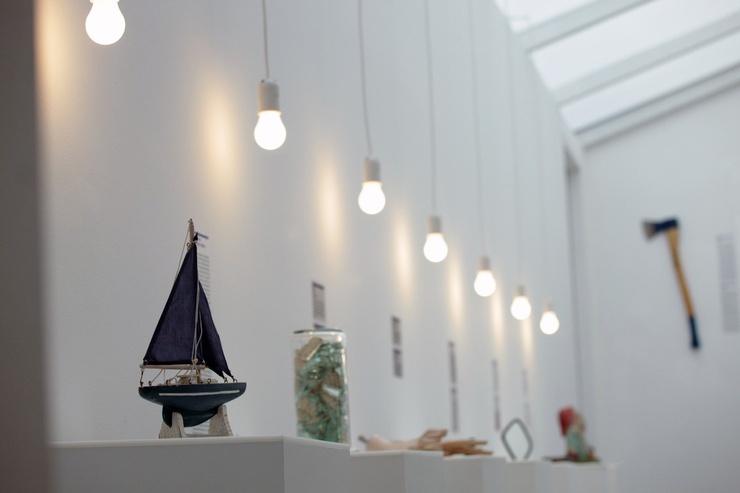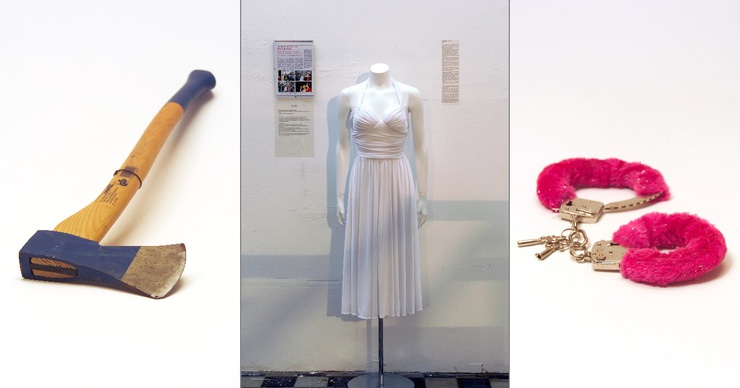
Zagreb's museum of broken relationships: ‘Break-up stories universal from Philippines to Croatia’
Published on
As valentine’s day looms, Olinka Vištica, 42, and her ex-boyfriend Dražen Grubišić celebrate the power of a split. They stored their relationship mementos in a museum in Zagreb along with other donated objects from former lovers in 2007, toured the exhibition through Europe and scooped the European museum award 2011 for the most innovative concept
cafebabel.com: Silicone breast implants from Serbia, a strand of hair from Skopje or an axe from Berlin. Olinka, how did you come up with the idea of exhibiting objects as mementos of broken relationships?
Olinka Vištica: It was that conversation you have when you are breaking up, especially on friendly terms. It was a hard time for both Dražen and me. These situations of stress and discomfort are very good for creativity. People just go on and stuff theirselves with new things, so we thought: What about the part of our lives that is just over now? How to transform or deal with it? We thought it would be great if there was a place where you could store all that – something like a museum. The idea was rotting on my computer for quite some time. Dražen called me two years later for a group exhibition competition in Zagreb and we were accepted. We had a couple of weeks to prepare, sent emails to friends, who sent emails to their friends...
cafebabel.com: How do you pick the objects?
 Olinka Vištica: It was hard to choose what to exhibit so we went by categories. There were so many donations. Some of them are at my house (sometimes I say it’s like a curse). The exposition space is divided in eight rooms. We want to give the visitor a sense of direction by giving hints. He will go through different emotional stadiums. The first room is all about promises and proximity which is the beginning of every love and lust. Then follow lust and desire, rage and fury, weddings and rituals, etc. The concept of time was interesting; we had a lot watches and clocks in our collection. A woman once came and asked for us at the tourist office; she had fled with her daughters from a dangerous husband from England to Ireland via boat. That was touching. Meeting people who donate is exciting. It sounds cheesy, but it’s like giving an organ, a part of yourself.
Olinka Vištica: It was hard to choose what to exhibit so we went by categories. There were so many donations. Some of them are at my house (sometimes I say it’s like a curse). The exposition space is divided in eight rooms. We want to give the visitor a sense of direction by giving hints. He will go through different emotional stadiums. The first room is all about promises and proximity which is the beginning of every love and lust. Then follow lust and desire, rage and fury, weddings and rituals, etc. The concept of time was interesting; we had a lot watches and clocks in our collection. A woman once came and asked for us at the tourist office; she had fled with her daughters from a dangerous husband from England to Ireland via boat. That was touching. Meeting people who donate is exciting. It sounds cheesy, but it’s like giving an organ, a part of yourself.
cafebabel.com: Your museum has been based in Zagreb since 2009, but you have with toured the exhibition a lot.
Olinka Vištica: It outgrew our personal experience. Zagreb has many things to offer but everything is pretty unorganised. After the first project was over, what could we do with all that stuff? Throw it away? We tried to establish it here permanently and received further requests. We depend as well on local organisers - including the local community is the most important thing. Normally we come with a collection of objects and the local organisers runs their own donation process in their country. So exhibitions always have a local touch.
cafebabel.com: Critics say your museum is purely commercial, without any aesthetic approach. How do you react to this kind of criticism?
Olinka Vištica: No-one can actually live from the project; it’s just enough to pay rent. Our project is borderline, but I don’t care if people think the museum is commercial. Everything that transforms your inner experience into something else can be perceived as art. You try to make statements about your thoughts via a certain media. There’s a moment of creation by telling the story that comes with the object. Breaking up connects people. Wherever we go, artists join the project. We have documentary and emotional value.
cafebabel.com: Is there a historical Croatian subtext underlying your expo?
Olinka Vištica: The stories have to do with cultural heritage or identity. Some stories from Zagreb, or put broader ‘this part of the world’ like Slovenia, Serbia, are very close and among my favourites. That was a thing we were aware of from the beginning. Break-up stories are universal from the Philippines to Croatia, everybody reacts the same. However, through their intimate stories you can sense mentalities and culture, even historical events.

The people who came to see our exhibition in Singapore may never have heard about our war, and the Croatian stories were partly about war. We toured the countries of the former Yugoslavia with a project called ‘broken hearts in broken territories’. We still share the same cultural references no matter what happened. We got a very moving letter from a 12-year-old boy from Sarajevo. When he had to leave the city with his parents, he fell in love with a girl in a car driving by.
cafebabel.com: The Museum of Broken Relationships somehow brought you back together with Dražen. How do you feel about that?
Olinka Vištica: We wouldn’t have kept in touch were it not for this project. It shows that relationships might change, nothing is a tragedy, there is always something that links you to these people. I have lots of respect for Dražen, we have been through all of this together. It’s very precious and you learn a lot. I can only speak for myself but it doesn’t have to be so painful.

cafebabel.com: Do people ask you advice on their breakups?
Olinka Vištica: Yes, but I’m not a psychologist. Maybe I know even less than anyone else. I may have a distant approach but love's always been a mystery to me. You keep on making the same mistakes. Yet what is actually a mistake ? It’s so relative, it happens to everyone all over the world. If you’re happy you don’t have the urge to communicate your happiness. We also demonstrate that it’s alright to be alone. You know in our global world you have to be in a couple, places in cinema are cheaper for two. However, maybe being alone can be an enriching period and you can make something out of it.
Catch the exhibition at the National Centre for Craft & Design between 8 January - 15 April 2012 in Sleaford, Lincolnshire
Photos: © brokenships.com; Olinka ©KK



